Fri 11 April
Article
(Un)sent Letters – BIJ/NA 2025 Residency Project at the StadsGalerij
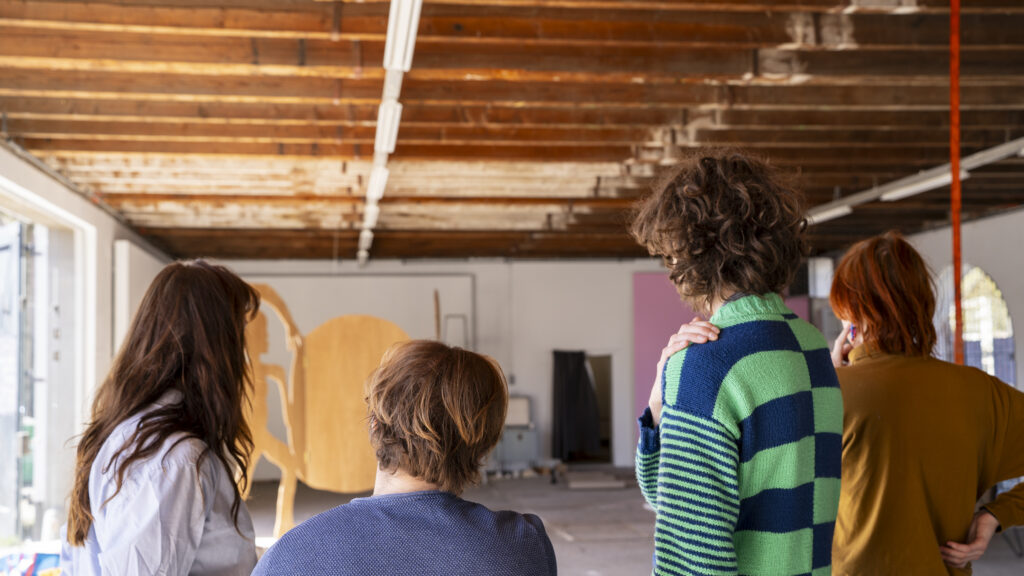
A quiet and attentive energy that only reveals itself if you linger longer than you are used to. Six artists — Sam Maske, Lili Struik, Jesper Driessen, Bobbi Cleij, Jetske Apollonia, and Abel Schaminée — spent a month working at the StadsGalerij Breda as part of the BIJ/NA project. Halfway through their working period, Manon van Beek visited the space and spoke with the artists about materials, doubts, and the things that are still unfinished.
The first thing I notice upon arrival is the group of artists sitting outside, warming themselves in the sunlight and discussing their work. As I step into the space, my gaze is immediately captured by the overwhelming abundance of materials, objects, installations, and scattered components: wood, ceramics, textiles, paper and above all: works that claim a great deal of space.
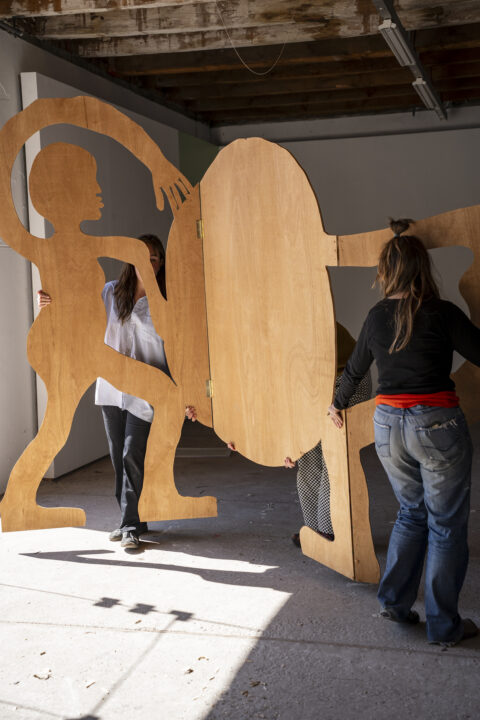
Foto door Meike Driessen
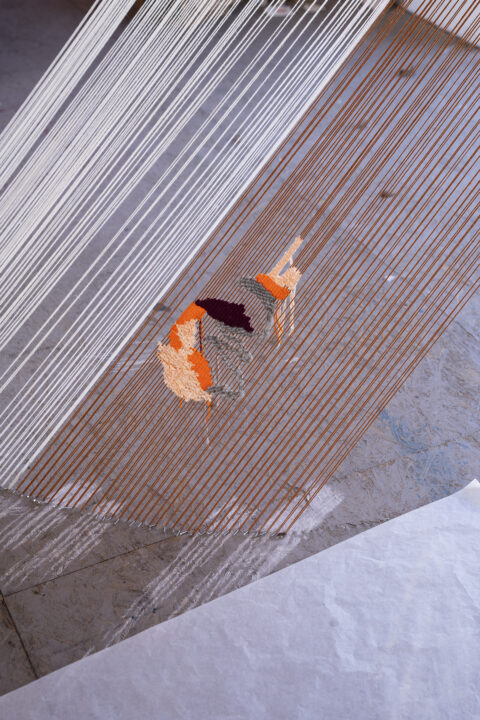
Foto door Meike Driessen
Ceramics and cyanotypes
Bobbi guides me through the space. On the wall hangs an enormous sheet of paper: rows of dates and columns of names — a schedule? Bobbi confirms this and explains that it is a way to see who is working when, ensuring that the artists are rarely alone at the StadsGalerij: “There is always someone around.”
Bobbi tells me about her practice: primarily sculptural works in ceramics and cyanotype — a photographic printing process producing cyan-blue images — although this time, she is working with wood. The open space allows for large, sculptural experiments. She is in the process of connecting pieces of wood using metal hinges. Two wooden figures lie facing each other, with a wooden circle between them, possibly destined to carry a cyanotype image, though Bobbi hasn’t decided yet. The figures seem to look at one another, or perhaps at something still unseen, and will eventually be adorned with ceramic faces, hands, and laces, elements still awaiting firing.
She shares a story: meeting someone at a café who described how he met his best friend, one needing shelter from the rain to smoke, the other offering space under an umbrella. “Maybe that will become the story behind the sculpture,” Bobbi muses aloud, “but maybe not.”
Letters and images
Outside, I talk to Sam, Abel, and Jetske. They tell me about the letters the six artists are writing to one another. No emails, no messages, real letters. Slow and tangible. A way to preserve the collective spirit of the residency. They are considering including some of these letters in the exhibition either as texts to be read or perhaps as audio recordings. They are still exploring possibilities. At the very least, the exhibition text itself will be a letter addressed to the visitors.
They also want to visually complement the letters with images created by Abel. His images, made with ephemeral pigments, slowly fade over time — a fitting metaphor for the fleeting nature of the residency at the StadsGalerij.
I also receive a letter. Jesper, unable to be present, has written to me instead. A spectral presence, made tangible through words, describing how their absence is not just practical but also conceptually fitting for their working method and the spirit of this exhibition. Jesper withdraws into a tent set up in a corner of the gallery space. At night, they trace the light falling from the window onto the floor with a sharp eye and a slow hand, later transferring these traces onto translucent paper by day. It is monastic work: knees and elbows anchoring the body, the face just centimeters from the paper, while listening to Paolo Cognetti’s The Eight Mountains. Their mind drifts to the Italian Alps. Jesper writes of their longing for the mountains and their plan to soon visit them with a childhood friend.
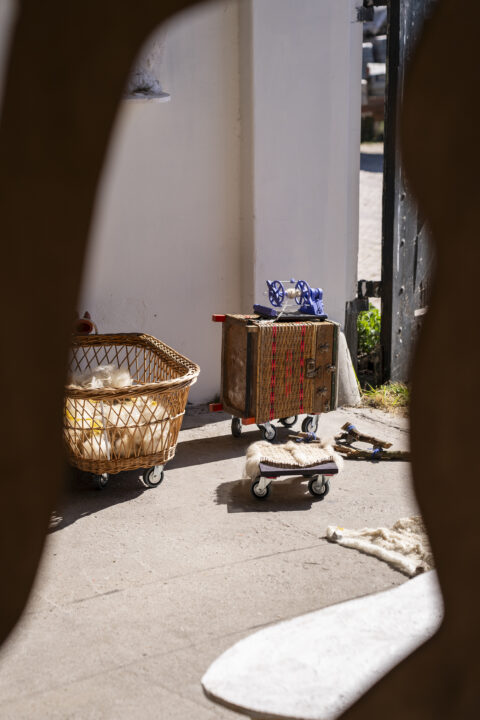
Foto door Meike Driessen
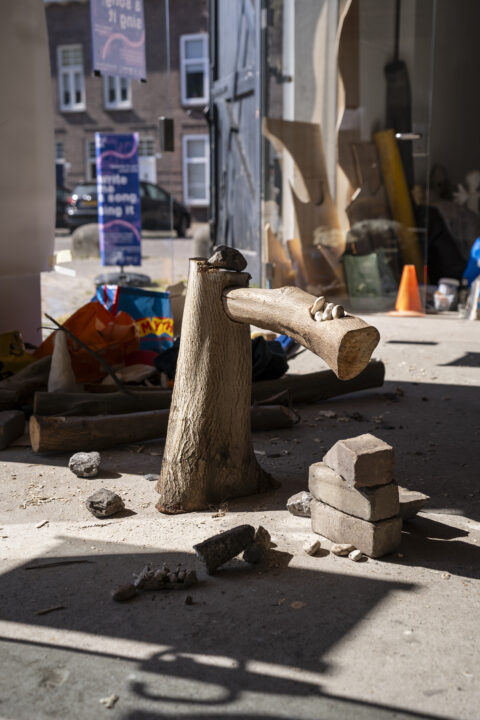
Foto door Meike Driessen
Wood, camera, and wool
Sam tells me he wanted to work with wood for the first time and sought it out in the Wilhelminapark — the place where he grew up. He wasn’t just looking for any wood; he sought meaning: “That tree had always gone unnoticed, until I found this wood.” The wood, perhaps once a silent acquaintance, is now becoming a sculpture. Maybe, he muses, he will write a letter to the tree.
Abel uses a self-built camera, attaching it to a telescope to capture images of the universe. He works with anthotypes — photographic prints made with plant-based materials like turmeric, beetroot, and spinach. These pigments fade in sunlight, causing the images to gradually disappear. For his largest photo, he uses a homemade ivy-based developer. Transience is a deliberate part of his practice. His images are not meant to endure but to be remembered. Prints of wonder and discovery, attempts to make the impossible briefly possible.
Lili shares her love for objects and a fascination with salvaged materials. During the residency, she works with second-hand wood sourced from online marketplaces. She leaves nails and holes intact, hardly altering the material. Her carefully constructed sculpture hangs from the ceiling, taking advantage of the gallery’s generous space. She doesn’t dwell on the wood’s history. It is there, and she works with it.
Jetske works with textiles — tactile and slow. During the residency, she learned to spin wool with a spinning wheel mounted on an old fisherman’s crate. The wool comes from sheep at a children’s farm in Breda, local and immediate. The slow pace frustrates her; she is impatient, yet she persists. Her work raises questions about our relationship with nature: “How would our relationship with nature change if we approached it more ritualistically? After all, what else do we use sheep for?” She tells me about an old illustration depicting a cotton plant growing sheep — a historical misunderstanding, but for Jetske a powerful symbol of our estrangement from nature. Her work seeks to bridge that gap.
Relationship to the work
am, Abel, and Jetske reflect on the impact of space on their practices. Abel notes that here, you can physically distance yourself from your work:
“You can zoom in and out, build a bodily relationship with what you make.” He looks forward to the audience’s reactions, to how people will experience his work without knowing its backstory. Jetske finds it difficult to let go. Not because her work is unfinished, but because it has demanded so much from her. Sam speaks of his graduation project, in which he used stones collected near his childhood home. He stacked them, cared for them, and came to know them intimately. Initially intending to return them, he has yet to do so. The stones helped him process the loss of a loved one. Now he works with wood and tools from his grandmother’s toolbox. Another connection to the past.
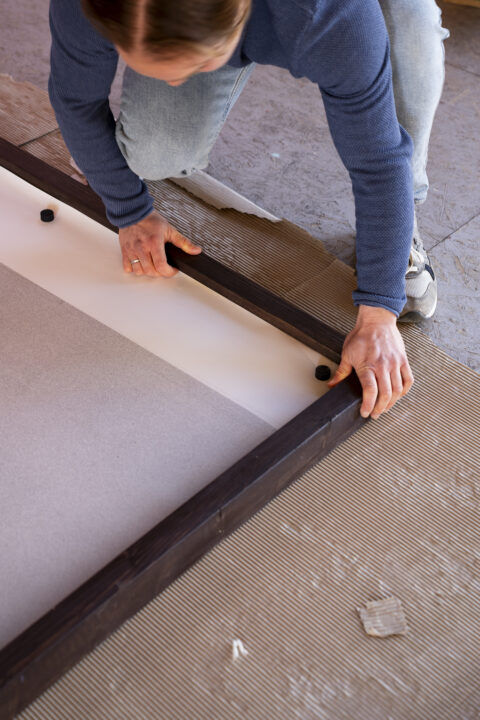
Foto door Meike Driessen
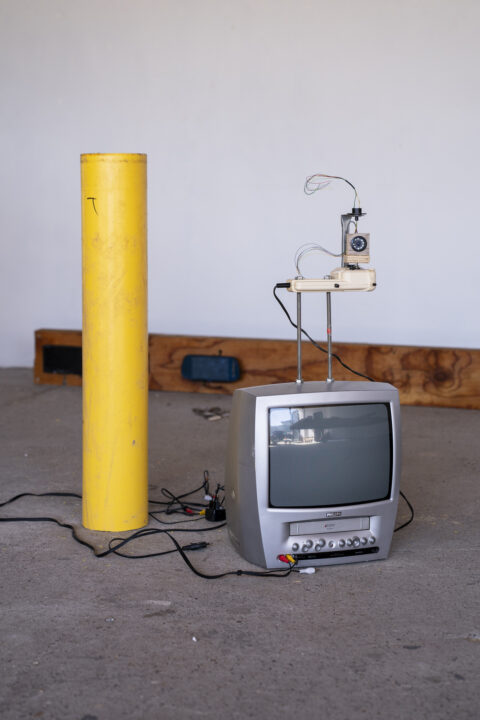
Foto door Meike Driessen
Back outside, the evening air has cooled. The day ends as it began with things that are still in motion. With materials that speak, letters waiting to be sent, and images that are already beginning to fade. It feels almost as if the space itself has become a letter, one that has yet to be posted but is already being written — in ceramics, wood, wool, and light.
10 April 2025
